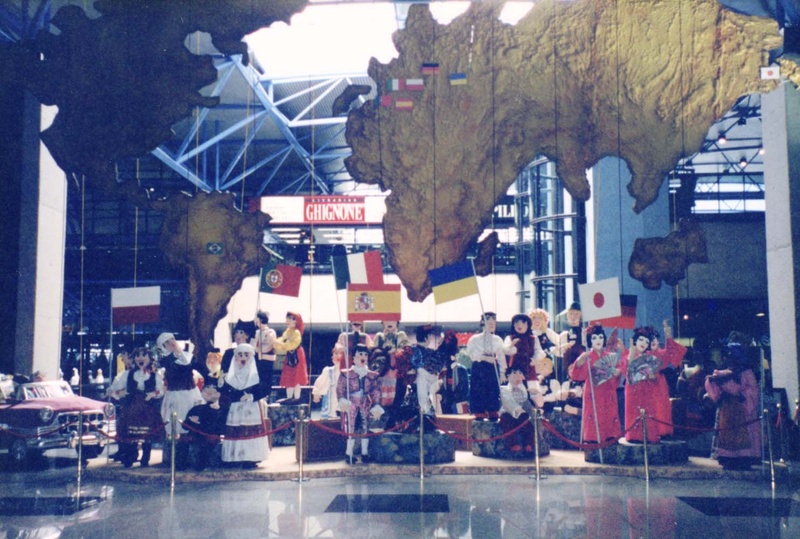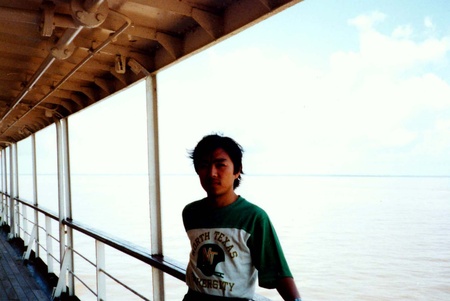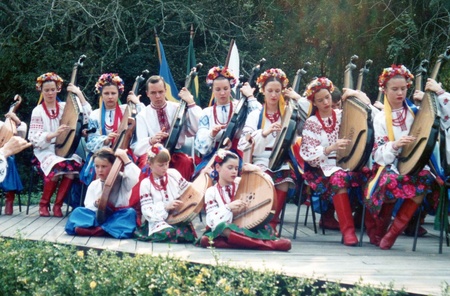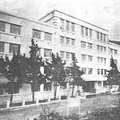I am truly grateful for my encounter with migration studies. I think there were two factors that led to it. The first was the excellent lectures I attended at university, and the second was my experience of living in Brazil.
In 1978, I entered the Portuguese Department at Sophia University, where I studied Portuguese and Brazil, and also had the opportunity to attend lectures by professors who were at Sophia at the time, including Shuichi Kato, Haruhiko Kindaichi, and Kazuko Tsurumi. It was a valuable experience that opened my eyes to the unique characteristics of Japanese culture, the fascinating Japanese language, and the depth of comparative research.
In particular, I learned a lot from Professor Kazuko Tsurumi, not only in lectures in large classrooms but also in seminars. Even when she was giving lectures in large classrooms, she would mercilessly scold female students who tried to leave silently during the lectures. During exams, students were allowed to bring in their own notes, but copies and borrowed notes were not allowed.
Tsurumi's seminar was very lively and open to participation from working adults and students from other universities. He would sometimes invite seminar students to his home, where he would stand in the kitchen and tell stories about his father. In his comparative sociology lectures, he talked about endogenous development theory as well as immigration research, which was his research topic, and it was very interesting and left a strong impression on me, especially his thoughts on Chinjimari. It was refreshing to hear him talk about immigrants as Japanese people in the world, as global citizens.
I learned the appeal of academics, which involve listening carefully to others, discussing things, organizing my own thoughts, and finding answers, as well as the meaning of comparison. I was encouraged to master a language in my field and become someone who can use that language to do comparative work.
Later, when I became a teacher at a university, I introduced the Tsurumi method, which allows students to bring their own handwritten notes to exams, and remembered my teacher. I don't think I would be who I am today if I hadn't met Professor Tsurumi.
I am often asked why Brazil. It has been more than 35 years since I first became interested in the country and enrolled in a university where I could study Portuguese. The year I enrolled coincided with the 70th anniversary of Japanese immigration to Brazil, and the previous year various events were held in Japan. There were also concerts and film screenings introducing Brazil. This was a time when Brazil was being touted as the "great power of the 21st century."
I was born in Niigata Prefecture, and at the time I was not particularly attracted to the climate peculiar to this region, with its often gloomy, overcast skies in the winter. This was because it tended to overlap with a dark, gloomy image, and I only saw closed-off, lonely towns. Perhaps that is why my image of Brazil, full of sunshine, boundlessly bright, cheerful, and filled with all kinds of people, seemed to be the polar opposite. This was probably at least one of the reasons why I was attracted to Brazil.
That was my simple motivation. Then, after I finished my second year at university, my department started an international student program, and I took the chance to go to Brazil as an undergraduate student.
It was 1980. That year, I arrived at Galeão Airport in Rio de Janeiro, Brazil, my first time abroad. It was a completely different world, with a unique city smell, and everyone I met was cheerful, talkative, and friendly. Portuguese sounded like music to me. The song "Menino do Hió," which was popular at the time, was playing in the airport (of course, I found out later), and it was so exotic and fascinating that a "foreign country" entered my five senses. From there, I was obsessed with Brazil, and lived in four cities: Juiz de Fora, Curitiba, Salvador, and Sao Paulo, and before I knew it, I became a Brazilian, and more than 10 years passed.
One of those cities is Curitiba, the capital of Paraná. It was here that I spent the longest time as an immigrant. I started out as an undergraduate student, returned to Japan, graduated, and then worked at the Salvador Japanese School and entered the graduate school at the Federal University of Paraná. After working at the Paraná State Government Cultural Affairs Office and the Japanese Consulate, I also applied for permanent residency.
He was so close to being accepted, but in the end, he returned to Japan without waiting for the results of his application. This was because he began to think about his identity. "If this continues, I may never be able to go back to being Japanese. I have become so Brazilian..." Whenever he met Japanese people who occasionally came to visit him from Japan, this feeling intensified.
Of course I love Brazil. But I don't want to leave Japan. I'm attracted to both Japan and Brazil. I want to be involved with both. So I decided to go back to Japan for a while. This was in 1993. It was right around the time when the so-called "dekasegi" phenomenon was at its height. It was a time when a big change was happening in Brazilian Japanese society. I witnessed the turning point with my own eyes.
Brazil is a country of immigrants. However, it is clearly a country of immigrants that is different from the United States and Canada. The difference between Anglo-Saxon and Latin. But that's not all. There is chaotic diversity and loose unity. There is a clear difference between Salvador, which has a strong black culture, and Curitiba, which has a large number of European immigrants, as if they were different countries in terms of people and society.
After reading Oda Minoru's "Nanime Mite Yaro," I traveled around Brazil by bus for two months while I was an undergraduate student. To be precise, I took two one-month trips, visiting both the northern and southern halves of the country. This experience became the basis for me to realize the diversity of the country of Brazil.
In the north, the coastline was beautiful but also poor, with passengers boarding the bus with old clothes, leftover food, and slaughtered chickens in their sacks. After a 47-hour long-distance bus ride, the passengers all pushed the bus when it got stuck in the mud. In the south, the people were much taller and paler, the toilets were higher, and it was difficult to relieve oneself. I later learned that Brazil is "Belbulíndia," a country that is a combination of Belgium, Bulgaria, and India.
Furthermore, when I was invited to the homes of my university classmates and acquaintances, I was very impressed by the existence of ethnic communities where they had maintained their immigrant cultures.
I was often invited to the Italian-Brazilian family of my friends on weekends and at Christmas because they thought I would be lonely by myself. I spent time with them like a family, helping them prepare pasta and singing canzones together.
In a German-Brazilian home, there was a picture of Goethe hanging up, all the family members played different instruments and enjoyed classical music, and family concerts were held. I was at a loss when they asked me if I could play an instrument or sing a Japanese song.
Among my friends of Ukrainian and Polish descent, there are semi-professional folk dancers, and when I visited them to watch a rehearsal, I was fascinated by their enthusiasm and splendor. "I'm proud to be a Ukrainian-Brazilian," one of them said with a smile.
In contrast, the Japanese-American dance groups consisted only of old and middle-aged women, and no young people to be seen. It was a strange contrast. What began to change this situation was the later phenomenon of dekasegi.
Furthermore, one of the things that started it all was the interview for the graduate school history department of the Federal University of Paraná. I was asked, "Since you are Japanese, why don't you study Japanese immigrants?" The department is the mecca of immigration research in Brazil, and Curitiba is also known as the "ethnic laboratory" because of its diverse ethnicities. Almost all of the professors are the children of immigrants, that is, second or third generation. I had a different research topic in mind, but in the end, this question got to the heart of the matter. Professor Saito Hiroshi of the University of São Paulo also recommended that I study immigration in the state of Paraná. I finally chose "The cultural transformation of Japanese immigrants and their descendants in southern Paraná" as my theme, and I have continued my research along that line to this day.
A series of many coincidences allowed me to walk this path. I am truly grateful to Professor Tsurumi and all my teachers. And now, I want to continue on and on. I don't have enough time. I want an alter ego. When I tried to leave Japan for a while, I encountered a "Japan" in Brazil that I had never even thought of before. I now feel truly glad that I encountered immigration studies. There is a great deal that we Japanese can learn about Japan from Japanese descendants.
When I talk about Japanese people, I always talk about "Okage sama de". The Japanese people at the Japanese Cultural Center of Hawaii chose this as one of the exhibition themes, and translated it into English as "I am what I am because of you." It's a wonderful translation. In Brazil, there are also second-generation Japanese immigrants who cherish the "feeling of gratitude" as a heritage inherited from their ancestors. When living in a different culture and being conscious of Japanese culture as the descendants of Japanese immigrants, "Okage sama de" is one of the cultural heritages and anchors of Japanese people. It is a precious heritage that we in Japan tend to forget, but we want to cherish and pass it on to the next generation. I hope that more and more young people will become involved in immigration research. I would also like to thank my parents for allowing me to live this kind of life.
© 2016 Shigeru Kojima








